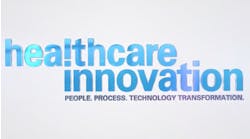It’s not just large hospital-based health systems and large multispecialty medical groups that are making use of artificial intelligence (AI) these days; indeed, the leaders of smaller physician group practices are discovering the huge opportunities involved in leveraging AI tools for a variety of purposes.
One of the many smaller patient care organizations that has plunged into AI is Moreno Valley Physicians, a two-physician, 12-staff-member group practice based in Moreno Valley in Riverside County in Southern California. Moreno Valley Physicians is part of a larger group, Clínica Médica Familiar, a 35-physician multispecialty practice based in nearby Ontario, Calif.
The leaders at Moreno Valley Physicians have been working with professionals at the Boston-based eClinicalWorks on leveraging AI to support their analytics work. In that regard, Esteban Guerrero, the general manager at Moreno Valley spoke recently with Healthcare Innovation Editor-in-Chief Mark Hagland about his and his colleagues’ work in this important area. Below are excepts from that interview.
Tell us about your journey into AI as a smaller medical practice.
We’ve been an eClinicalWorks user for four-and-a-half years now. In 2019, I was hired as a practice consultant. There were losing money every month, quality was low, providers were leaving, overturn was high. I was hired in October 2019, and the number-one thing I said was, we had to invest in an EMR. I was already working with the practice management side of eClinicalWorks. And so in November 2019, we started, and were fully implemented and live by December 1, and fully live on our own by January 1, 2020. We had 30 years of business operations all on paper at that point. We obviously needed to switch to an EHR [electronic health record], but my predecessors had tried four times to switch to different EHRs, and all had failed within weeks, before we successfully implemented eClinicalWorks.
Tell me about your journey forward into the analytics tools provided by eClinicalWorks?
Yes, the analytics tools and others inside eClinicalWorks have changed our processes to narrow down human work. And that’s where AI came in. And in late July, eClinicalWorks announced it was testing AI for Spanish. And we are 90-percent Spanish-speaking population. So I’m the beta tester. We were able to set up tools to set up processes inside the office. And our population don’t read, write, or speak English. So we have to help them. They’re using AI to translate full SOAP [subjective, objective, assessment, and plan] notes and summaries with the click of a button. Same day, they leave our office with that note in Spanish.
When did you go live with eClinicalWorks?
We went live in mid-September of last year. And among the functionalities, there is an integrated application within eClinicalWorks that manages messaging and provides lab results to patients, in either English or Spanish, depending on their preference.
And here’s a real-life example: we had a patient who is over 60 years old, and who arrived in this country over 40 years ago from Mexico, but has never managed to learn English. She would get care here and would go to Tijuana just to have them explain to her what was going on, and to get documentation in Spanish. Now, she has full functionality linguistically, and when we told her that, she broke down in tears, she was so overjoyed. So the automated functionalities are excellent.
How would you like to further expand the AI capabilities of this solution?
eClinicalWorks has advised all of us that they’re expanding AI into pretty much everything. It will be an available bundle option. It will allow us to use the full spectrum. Reducing provider workflows, scribing some notes, using their transcription service. This will open up more appointments for patients and enhance the healow® opportunity; and they’re working to develop all these tools in English. In a year, they’re looking to expand that not only to Spanish, but to most languages available in the US.
Obviously, you want to improve physicians’ worklives and reduce their burdens?
Yes. And as the General Manager, I am COO, director of quality, CIO, I have to do everything. And our MAs are not just back-office MAs. And we deal with everyone at all ages, at any given time, and we have to coordinate that care to see the patient for their primary purpose.
Another use of AI is in hospital discharge summaries: it will allow us to take a 45-page discharge summary, narrow it down using AI, to give the physician a one-page summary. So the physician can see more patients and spend more time with those patients and not having to rush so much. Typically 20-30 patients a day. And we’re doing massive social determinants and mental health care, total holistic, whole-person care, to meet our patients where they are.
What advice would you like to share with to your peers in other practices?
If you’re tired of being overworked, introduce these tools. And there is set-up time necessary and training necessary. You will get hours per day back, once implemented.
And leveraging AI and other tools will be especially valuable when caring for marginalized populations, correct?
Yes; the Latino/Hispanic population is both marginalized and underserved, as well as underprivileged, in America, specifically here in California. We see a large influx of immigration, and we have to take care of these folks. And it’s important to remember that AI is not doing the work for you; it’s supplementing the work you do. And so we are able to include and reduce equity disparities and help our population to feel that they are receiving what the healthcare system should be giving them. And we have peer-to-peer opportunities where we can just share records, instead of having MAs calling people to obtain faxes. And we serve the Black community, the LGBTQ community, as well. And we serve everyone, and would like to continue to better serve those patients. I would say to colleagues in other patient care organizations, just get it done, just do it.


